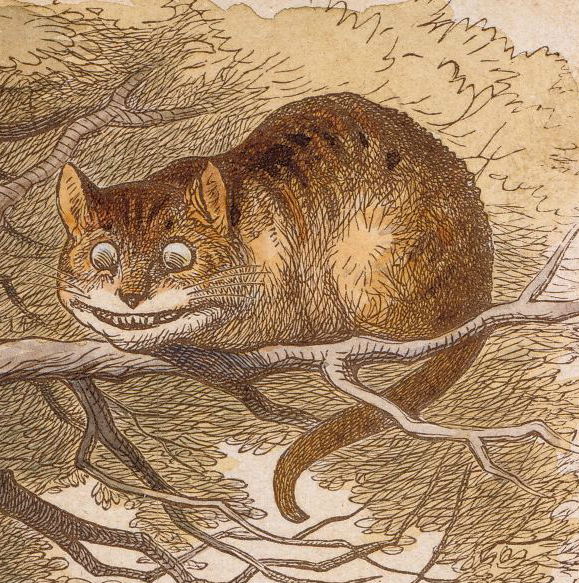Through out Alice in Wonderland,by Lewis Carroll Alice is always found in an odd situations. These situations cause her question everything that occurs around her and find an explanation if necessary. While her attempt at trying to figure out what is happening to her is a sign of intelligence, her thoughts themselves end up being just as nonsensical or odd as the situation she is in. Alice’s thoughts begin in a reasonable place but she loses focus and her thoughts stray from their origin. Worse yet when she encounters a problem she failed to solve on her first attempt she becomes discouraged and cries.On the other hand even while she is in this state she actually still tells herself to keep a level head and think things through. This could be attributed to her age(which is believed, by scholars, to be seven based on her age in the sequel stories) but since her age is never explicitly stated one could argue against this. There is one scene in particular that shows just how dysfunctional Alice’s thoughts are. When she is at the white rabbits and she grows enormous, she takes talks about growing up but thinks that because her height is already larger than it should be she assumes she has already grown up. This shows she attributes aging to her height and nothing else. This scene immediately made her appear like a dimwit.
While Alice does not regularly have brilliant thoughts, or the ability to keep one thought in her mind for too long, she does display at least one good trait: the ability to learn. This is shown whenever she is in a situation that alters her physical height. When she first turned small she knew that she had to find something else to eat in order to change to her normal height. This is the only consistent thing in her thinking. Whenever she finds her height changed she knows she must eat something to alter her height.
 My favorite character is the Cheshire cat. At first I was confused what a Cheshire was, so I looked it up and found it is defined by Mariam Webster as: Cheshire is a ceremonial county in North West England, in the United Kingdom. The western edge of the county forms part of England’s border with Wales. This concept of coming from another country could play into the whole idea if imperialism in Alice in Wonderland. The Cheshire cat has a huge grin on his face, and often poses philosophical questions to Alice. Carroll must have had a love for cats, because cats mentioned by Alice in the first chapter, as she has one herself, whom she loves. Cats represent mischievous charters in not literature.
My favorite character is the Cheshire cat. At first I was confused what a Cheshire was, so I looked it up and found it is defined by Mariam Webster as: Cheshire is a ceremonial county in North West England, in the United Kingdom. The western edge of the county forms part of England’s border with Wales. This concept of coming from another country could play into the whole idea if imperialism in Alice in Wonderland. The Cheshire cat has a huge grin on his face, and often poses philosophical questions to Alice. Carroll must have had a love for cats, because cats mentioned by Alice in the first chapter, as she has one herself, whom she loves. Cats represent mischievous charters in not literature.